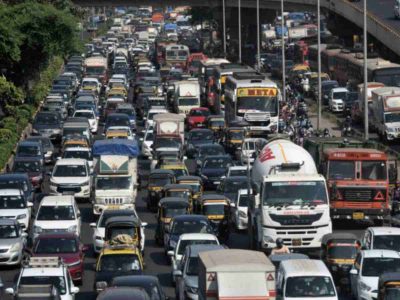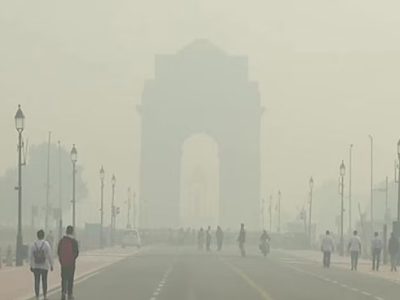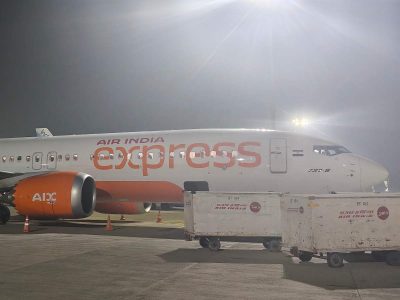The Delhi Police have recorded a slight decrease in the number of cases lodged under the Narcotic Drugs and Psychotropic Substances (Prevention) Act this year. However, the quantity of seized drugs remains at an all-time high.
According to the police data, from January 1 to October 15, the police lodged 856 cases under the Act while arresting 1,209 people. They lodged 1,144 cases and made 1,468 arrests during the corresponding period last year.
Although the number of cases lodged and people arrested remains lower than the previous year, the amount of seized contraband is higher. To put matters into perspective, the police have seized 103.766 kg of opium, 3,132.974 kg of marijuana, 70.843 kg of heroin, 80.538 kg of poppy heads, 1,293.298 kg of cocaine, and 50.572 kg of charas.
Also read: Drunk driving rises by 20%; 4 persons on average die on city roads every day
In contrast, the police seized 62 kg of heroin, 15.31 kg of cocaine, 2,802.29 kg of ganja, 377.91 kg of opium, 77.37 kg of charas, and 346.37 kg of poppy heads in 2023.
The stark increase in the amount of cocaine and marijuana/ganja seized is attributed to the massive international drug bust, which resulted in the recovery of over Rs 5,620 crore worth of cocaine and hydroponic marijuana on October 2.
It is also touted as the biggest drug bust in India, with officials stating that the drugs were meant to be sold to clients at four major concerts in Delhi, Mumbai, and Goa, scheduled between October and March.
The seized narcotics included 562 kg of cocaine and 40 kg of hydroponic marijuana. The cocaine, sourced from abroad, was estimated to be worth Rs 10 crore per kg, while the hydroponic marijuana, produced in Thailand, was valued at Rs 50 lakh per kg.
According to a senior police official, the national capital has become the centre through which shipments flow.
“Delhi is the one place where all states are connected, which makes it easier for shipments to flow. Direct flights to other countries also mostly connect from here, which has helped turn Delhi into the hub that it is now. The consumption is not as high here domestically since most of the drugs found here are meant to be shipped in bulk to other states,” he said.
However, the officer highlighted that most of the drugs available in the national capital have now started to be targeted primarily at college students.
“Specifically, a drug like marijuana is more likely to be consumed by students. It is unfortunate that it’s mostly students who sometimes peddle the drugs as well. This factor makes it a bit difficult to conduct operations in student areas,” he said.
The operation leading to the recovery of drugs worth over Rs 5,620 crore was triggered by a tip-off from a central intelligence agency in August. Over the next few weeks, the Special Cell meticulously tracked the cartel’s activities, identified key players and their operations, and nabbed them.
On October 10, another massive drug bust resulted in the recovery of 200 kg of cocaine, valued at Rs 2,000 crore, from West Delhi’s Ramesh Nagar. Reportedly, the police received information about the West Delhi warehouse during the interrogation of the accused in the Mahipalpur drug bust. The owner of the warehouse, a UK citizen, has allegedly gone into hiding.
To tackle the drug menace in Delhi, Operation Kavach was launched in 2023. As part of the operation, the police conducted a 12-hour crackdown from August 31 to September 1 across 15 districts, during which they raided 325 locations, arresting 944 individuals.
The initial operation resulted in the recovery of 108.93 grams of heroin, 66.28 kg of ganja, 1,100 grams of charas, and 16 grams of MDMA.
Additional Commissioner of Police Sanjay Bhatia, who spearheaded the operation, said, “Following the raids, authorities registered 66 cases under the Narcotic Drugs and Psychotropic Substances (NDPS) Act. Additionally, 54 cases were filed under the Delhi Excise Act, with 54 arrests made and substantial quantities of illicit liquor seized.”
Also read: Stuck in second gear: Only one of city’s 5 major railway stations is disabled-friendly
A senior officer said, “Most of the drugs procured were recovered because of the festive season and the number of concerts scheduled to take place across the Delhi-NCR. In the last two years, there were barely any concerts as high-profile as the ones the national capital hosted or will be hosting this year.”
On the other hand, during the Lok Sabha elections, the Election Commission released data regarding the amount of seizures made by local authorities. This included seizures of drugs, alcohol, cash, precious metals, and freebies. Under drug seizures, Delhi recorded the third-highest amount of seized illegal substances at Rs 358.4 crore. It was only topped by Punjab at Rs 665.7 crore and Gujarat at Rs 1,187.8 crore.





